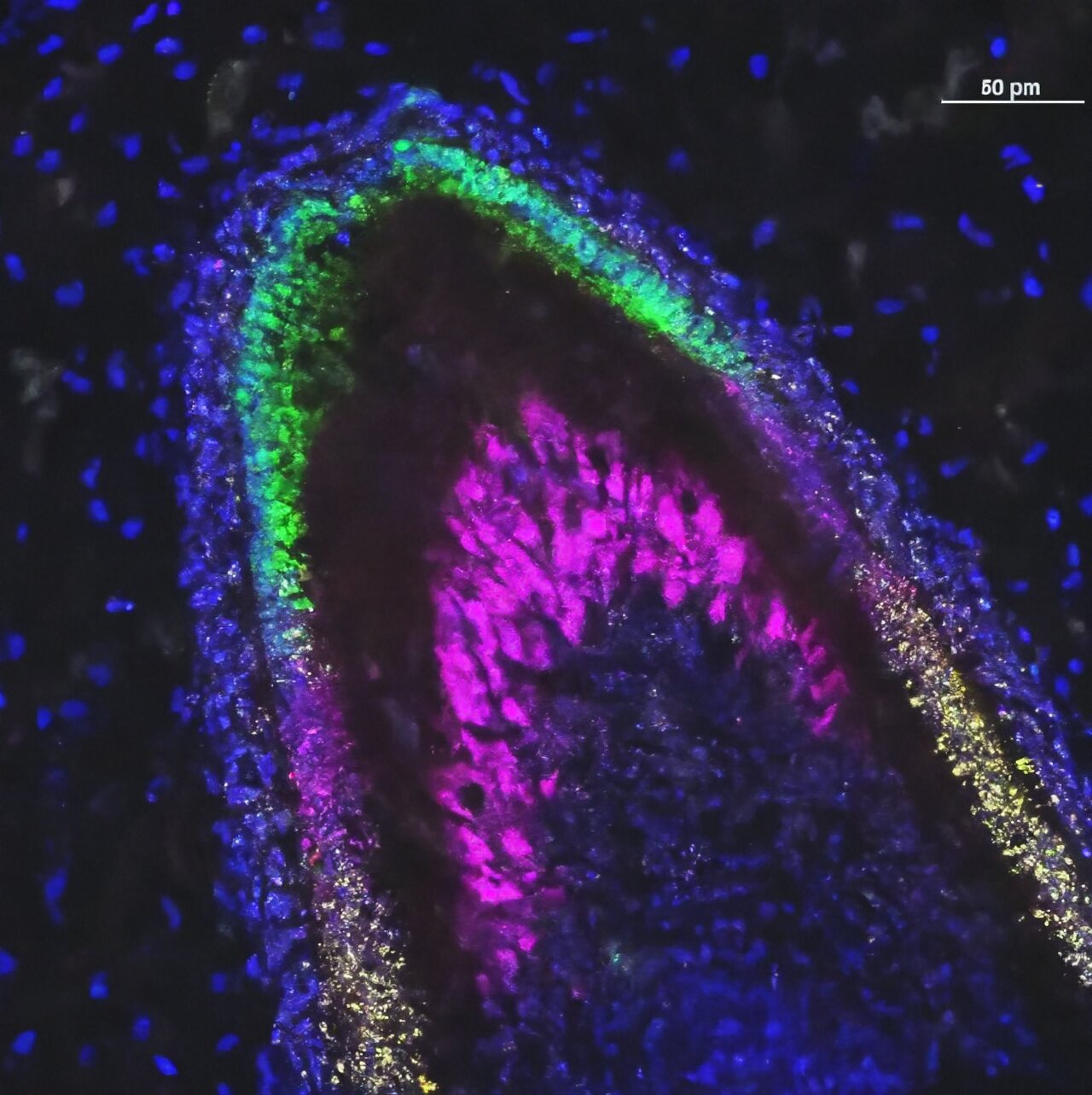Organoids have now been created from stem cells to secrete the proteins that type dental enamel, the substance that protects tooth from injury and decay. A multi-disciplinary staff of scientists from the College of Washington in Seattle led this effort.
“This can be a important first step to our long-term objective to develop stem cell-based remedies to restore broken tooth and regenerate these which are misplaced,” stated Hai Zhang, professor of restorative dentistry on the UW College of Dentistry and one of many co-authors of the paper describing the analysis.
The findings are printed as we speak within the journal Developmental Cell. Ammar Alghadeer, a graduate scholar in Hannele Ruohola-Baker’s laboratory within the Division of Biochemistry on the UW College of Medication was the lead creator on the paper. The lab is affiliated with the UW Medication Institute for Stem Cell and Regenerative Medication.
The researchers defined that tooth enamel protects tooth from the mechanical stresses incurred by chewing and helps them resist decay. It’s the hardest tissue within the human physique.
Enamel is made throughout tooth formation by specialised cells referred to as amelobasts. When tooth formation is full, these cells die off. Consequently, the physique has no solution to restore or regenerate broken enamel, and tooth can grow to be vulnerable to fractures or topic to loss.
To create ameloblasts within the laboratory, the researchers first needed to perceive the genetic program that drives fetal stem cells to become these extremely specialised enamel-producing cells.
To do that they used a method referred to as single-cell combinatorial indexing RNA sequencing (sci-RNA-seq), which reveals which genes are lively at totally different levels of a cell’s growth.
That is doable as a result of RNA molecules, referred to as messenger RNA (mRNA), carry the directions for proteins encoded within the DNA of activated genes to the molecular machines that assemble proteins. That’s the reason modifications within the ranges of mRNA at totally different levels of a cell’s growth reveal which genes are turned on and off at every stage.
By performing sci-RNA-seq on cells at totally different levels of human tooth growth, the researchers have been capable of receive a collection of snapshots of gene activation at every stage. They then used a complicated laptop program, referred to as Monocle, to assemble the seemingly trajectory of gene actions that happen as undifferentiated stem cells become absolutely differentiated ameloblast.
“The pc program predicts the way you get from right here to there, the roadmap, the blueprint wanted to construct ameloblasts,” stated Ruohola-Baker, who headed the mission. She is a professor of biochemistry and affiliate director of the UW Medication Institute for Stem Cell and Regenerative Medication.
With this trajectory mapped out, the researchers, after a lot trial and error, have been capable of coax undifferentiated human stem cells into turning into ameloblasts. They did this by exposing the stem cells to chemical alerts that have been recognized to activate totally different genes in a sequence that mimicked the trail revealed by the sci-RNA-seq knowledge. In some circumstances, they used recognized chemical alerts. In different circumstances, collaborators from the UW Medication Institute for Protein Design created computer-designed proteins that had enhanced results.
Whereas conducting this mission, the scientists additionally recognized for the primary time one other cell kind, referred to as a subodontoblast, which they imagine is a progenitor of odontoblasts, a cell kind essential for tooth formation.
The researchers discovered that collectively these cell varieties could possibly be induced to type small, three-dimensional, multicellular mini-organs, referred to as organoids. These organized themselves into buildings just like these seen in creating human tooth and secreted three important enamel proteins: ameloblastin, amelogenin and enamelin. These proteins would then type a matrix. A mineralization course of that’s important for forming enamel with the requisite hardness would comply with.
Zhang stated the analysis staff now hopes to refine the method to make an enamel comparable in sturdiness to that present in pure tooth and develop methods to make use of this enamel to revive broken tooth. One strategy could be to create enamel within the laboratory that would then be used to fill cavities and different defects.
Ruohola-Baker factors out that one other extra formidable strategy could be to create “residing fillings” that would develop into and restore cavities and different defects. In the end, the objective could be to create stem cell-derived tooth that would change misplaced tooth solely.
Ruohola-Baker stated tooth are an excellent mannequin to work on the event of different stem cell therapies.
“Lots of the organs we want to have the ability to change, like human pancreas, kidney, and mind, are giant and complicated. Regenerating them safely from stem cells will take time,” she stated. “Enamel alternatively are a lot smaller and fewer advanced. They’re maybe the low-hanging fruit. It might take some time earlier than we will regenerate them, however we will now see the steps we have to get there.”
She predicts, “This may occasionally lastly be the ‘Century of Residing Fillings’ and human regenerative dentistry usually.”
